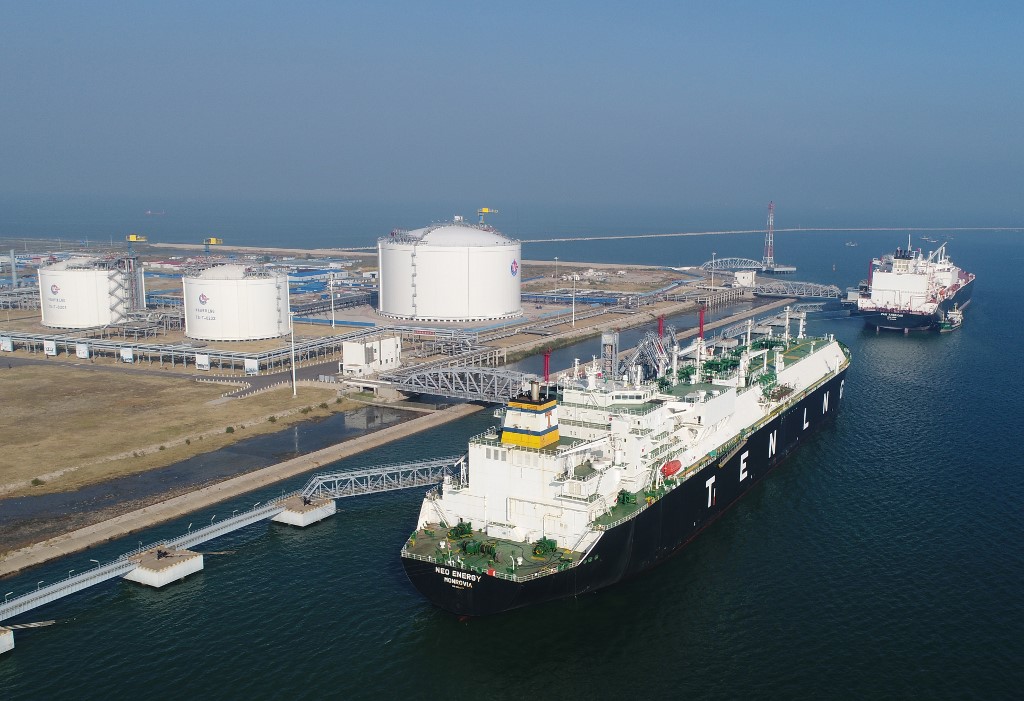(ATF) Hydrocarbon thirsty China, the world’s largest oil importer and its largest greenhouse gas emitter by long way, is still going long on oil and gas exploration.
Last week, Chinese media group Netease said the country has recently discovered some 200 million tonnes (around 1.5 billion barrels) of oil, in addition to natural gas fields estimated at 300 million tonnes.
The report added that in January state-run China National Offshore Oil Corp. (CNOOC) will begin extracting proven reserves believed to exceed 100 billion cubic meters (bcm) at the Lingshui-17 field, 150 km (93 miles) south of Hainan island in the South China Sea.
The Asia Eight: Daily must-reads from world’s most dynamic region
CNOOC will use the 53,000-tonne Lingshui-17 rig, China’s first self-operated large-scale deepwater gas field rig and the world’s largest oil and gas storage platform.
Though the field lies within the hotly disputed South China Sea, it is clearly within China’s UN-mandated 200-nautical mile exclusive economic zone (EEZ). As such, it has no competing claims from other countries, including South China Sea claimants, the Philippines, Taiwan, Vietnam, Malaysia, Indonesia and Brunei.
Even if the field was outside of China’s 200-nautical mile EEZ, Beijing would still claim the area as part of its nine-dash line claiming around 90% of the South China Sea.
CNOOC also made a significant discovery at Huizhou 26-6 in the eastern South China Sea in June. It’s expected to become the first mid-to-large sized condensate oil and gas field in the shallow water area of the Pearl River Mouth Basin.
For that particular play, the discovery well HZ26-6-1 was drilled and completed at a depth of 4,276 meters and encountered oil and gas pay zones with a total thickness of approximately 422.2 meters, according to CNOOC. The well was tested to produce around 2,020 barrels of oil and 15.36 million cubic feet of gas respectively per day.
This activity is a response to Beijing’s push to make cleaner burning natural gas at least 10% of the country’s energy mix by the end of the year and at least 15% by 2030. Chinese state-run energy producers have also raised spending so far this year to multi-year highs to help Beijing meet its gas goals.
More oil and gas, please
However, amid promising news that China is ramping up its offshore oil and gas production, it still needs even more resources to fuel its still thriving economy, particularly natural gas for industry and power generation.
Though China is already the world’s top crude oil importer, it has set even more records so far this year, importing some 370.7 million tonnes of crude over the first nine months of the year, according to Refinitiv shipping data. That marks a 14.2% increase from the same period last year and a massive 26.2% increase from 2018.
China’s recent oil buying binge, in large part a move to take advantage of rock bottom prices, has been the only bright spot in an otherwise brutal year for global oil markets and crude producers stretching all the way from Saudi Arabia to Russia to the US and back again. These producers have seen multi-year price plunges well beneath break-even points amid the worst oil demand destruction in history due to the economic impact of the Covid-19 pandemic.
However, China’s onshore oil production has seen better times. Although the country was the fifth-largest petroleum and other liquids producer in the world in 2019, a notable accomplishment, most of its production comes from onshore legacy fields that require expensive enhanced oil recovery techniques to sustain production, the US Energy Information Administration (EIA) said in September.
After declining considerably for three years, China’s petroleum and other liquids production also reversed course and increased to 4.9 million barrels per day (bpd) in 2019, the EIA said. Yet, as a reality check, Chinese domestic oil production is still meeting less than 50% of its oil consumption needs.
Admittedly, China still has it work cut out managing its oil consumption, production and imports, but Chinese President Xi Jinping’s new carbon neutral pledge by 2060 could help.
Gas options growing
Though it will take considerable time to pivot away from over-reliance on gasoline and diesel (both crude oil products), especially in its transportation sector, a growing option is gas, notably compressed natural gas (CNG) or LNG, that can be used for long distance trucks and even cars. Currently, China has an estimated natural gas vehicle (NGV) fleet of some 6 million vehicles, around 3.7% of the country’s total, with that number projected to increase going forward.
As such, China’s natural gas sector could be an even more integral part of both its energy strategy than crude oil in the long term. China’s gas sector, for its part, also has distinct advantages over its crude oil counterpart.
First, China is building out a massive natural gas pipeline infrastructure along with neighbouring gas giant and supplier Russia, as well as developing its LNG infrastructure to take advantage of an historic supply glut and corresponding price plunge in the super-cooled fuel.
China will become the world’s second largest LNG exporter by around 2022, bypassing Japan, and as such could also become a major re-seller and trader of the fuel not only as its energy companies set up trading desks in Singapore but as an LNG trading hub develops in Shanghai per the country’s plans.
But, for now China is still in an oil supply crunch and needs to offset its hydrocarbon thirst anyway it can – both overseas and at home, while it also pivots to more gas and plows headlong into its 2060 carbon neutral pledge.






















